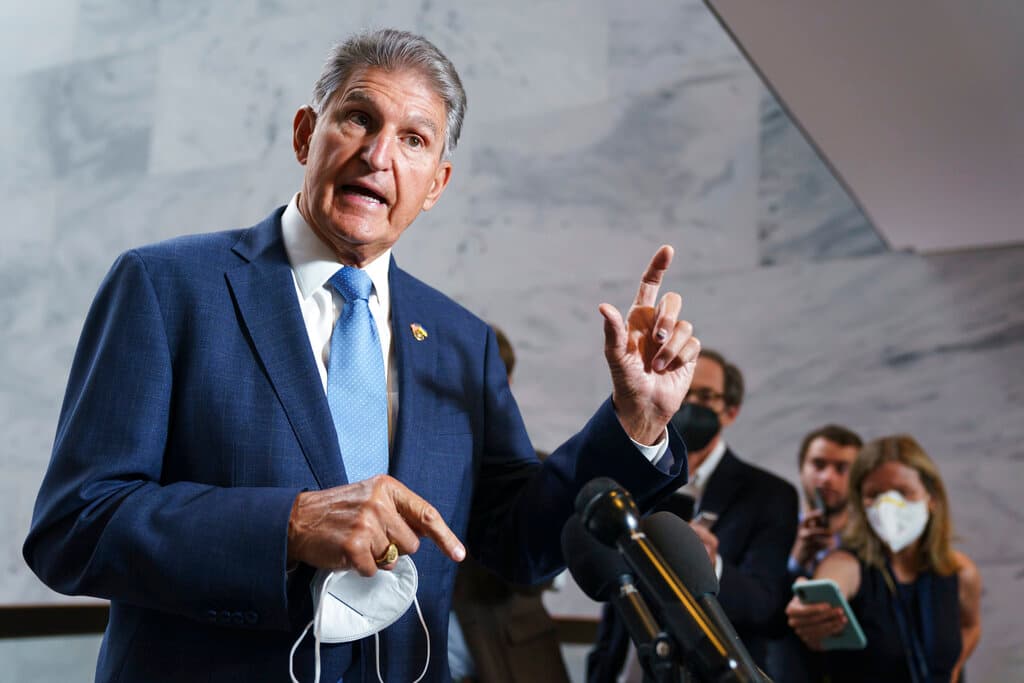GOP Eyes Three States on Path Back to Senate Control in 2024
If Republicans take the Senate and Democrats retake the House in 2024, it would be the first time in American history that the minority party in each chamber managed to regain control the same year.

After Democrats gained a seat in a year that Republicans had hoped would usher in a new GOP Senate majority, Republicans are suddenly seeing a path back to the majority in 2024 through three states President Trump carried in 2020.
With 33 Senate seats up for grabs in 2024, West Virginia, Ohio, and Montana will be prime targets for Republicans looking to flip control. If Republicans take the Senate and Democrats retake the House in 2024, it would be the first time in American history that the minority party in each chamber managed to regain control in the same year.
In West Virginia, Senator Manchin, a conservative Democrat, will be running for re-election in a state that President Trump carried by nearly 40 points in 2020. In 2018, when Mr. Manchin was last elected, he won with 49.6 percent of the vote.
Mr. Manchin faces long enough odds that he might not even seek re-election, according to an associate editor at Sabato’s Crystal Ball at the University of Virginia’s Center for Politics, Miles Coleman. “My operating assumption on Joe Manchin is that he’s going to retire,” he told the Sun.
Mr. Manchin has refused to say whether he will run in 2024, telling NBC Sunday, “I haven’t made a decision what I’m going to do in 2024,” adding that “everything is on the table.”
Two Republicans, Representative Alex Mooney and Governor Justice, have already put themselves forward as 2024 Senate candidates, setting up what could be a tough Republican primary.
“I’m seriously considering running for U.S. Senate. I want continued goodness for our state,” Mr. Justice said. “I’ll continue helping West Virginia no matter if I’m at home or in Washington, D.C.”
The influential Club for Growth, a committee historically aligned with Mr. Trump, has already signaled that it favors Mr. Mooney, potentially giving Mr. Manchin an opportunity to capitalize on a divided GOP.
In Ohio, Senator Brown will be running for re-election in a state where Mr. Trump carried 53.3 percent of the vote in 2020. Mr. Brown carried 53.4 percent of the vote when he was last elected in 2018. According to Mr. Coleman, Senate results have been trending more in line with presidential results, with 2016 being the first time since the popular election of senators began in 1913 that every state elected a senator from the same party that won the presidential vote.
This works against senators like Mr. Brown, because the seats that are up for re-election in 2024 were previously up in 2006, an anti-President Bush midterm; 2012, when Democrats benefited from President Obama’s coat tails; and 2018, an anti-President Trump midterm.
To compound Mr. Brown’s problems, Ohio has changed from a swing state to a safer Republican state, a trend illustrated by Senator Vance’s 2022 win after a campaign in which Mr. Vance was barely visible.
Montana — the final state that Mr. Trump won in 2020 with a Democratic senator — will see Senator Tester attempt to recreate his narrow 2018 win in a state Mr. Trump carried by 16 points.
Mr. Tester, however, in a December interview with NBC, refused to commit to running in 2024, meaning a new Democrat could be seeking to replace him.
According to Mr. Coleman, Montana, like Ohio, starts as a tossup for Democrats hoping to retain the seat, with Mr. Tester’s incumbency and the size of the state working in his favor.
In such a lightly populated state, voters are more likely to have personal connections to their senator, making retail politics a more viable strategy for Mr. Tester.

